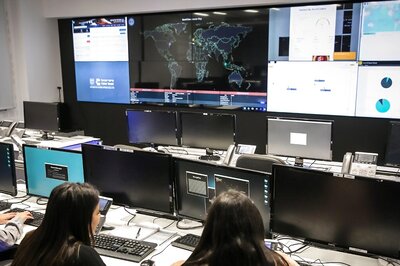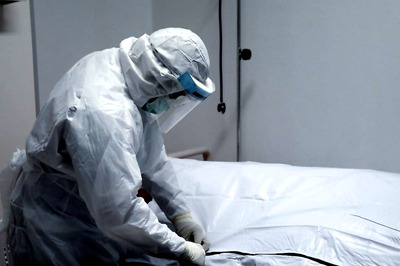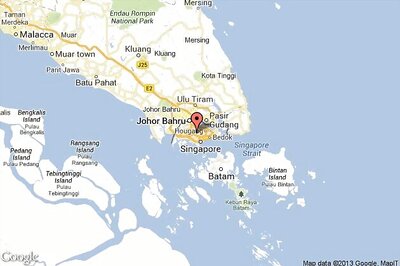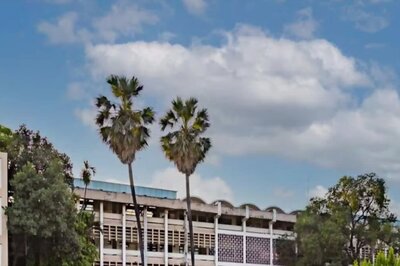
views
Japan's Hayabusa2 probe landed successfully Thursday on a distant asteroid for a final touchdown, hoping to collect samples that could shed light on the evolution of the solar system. "The touchdown is successful," spokesman Takayuki Tomobe from the Japan Aerospace Exploration Agency (JAXA) told AFP. The touchdown was greeted with cheering and applause in the JAXA mission control room, with officials grinning and shaking hands.
JAXA officials said earlier that the probe appeared to have landed successfully, but confirmation came only after Hayabusa2 lifted back up from the asteroid and resumed communications with the control room. "All of us are relieved to see that the probe has resumed sending data from its antenna, which can send a large amount of data to us," Tomobe said. Research director Takashi Kubota told reporters that the touchdown operation was "more than perfect," adding that project manager Yuichi Tsuda told the team: "we have made history."
The brief landing Thursday is the second time Hayabusa2 has touched down on the desolate asteroid Ryugu, some 300 million kilometres (185 million miles) from Earth. The complex multi-year mission has also involved sending rovers and robots down to the surface. Thursday's touchdown was intended to collect pristine materials from beneath the surface of the asteroid that could provide insights into what the solar system was like at its birth, some 4.6 billion years ago.
To get at those crucial materials, in April an "impactor" was fired from Hayabusa2 towards Ryugu in a risky process that created a crater on the asteroid's surface and stirred up material that had not previously been exposed to the atmosphere.
'Extremely attractive materials'
Hayabusa2's first touchdown was in February, when it landed briefly on Ryugu and fired a bullet into the surface to puff up dust for collection, before blasting back to its holding position. The second touchdown required special preparations because any problems could mean the probe would lose the precious materials already gathered during its first landing. A photo of the crater taken by Hayabusa2's camera after the April blast showed that parts of the asteroid's surface are covered with materials that are "obviously different" from the rest of the surface, mission manager Makoto Yoshikawa told reporters before the latest touchdown.
Scientists are hoping the probe will have collected unidentified materials believed to be "ejecta" from the blast after landing briefly in an area some 20 metres away from the centre of the crater. "It would be safe to say that extremely attractive materials are near the crater," project manager Tsuda said. The touchdown is the last major part of Hayabusa2's mission, and when the probe returns to Earth next year scientists hope to learn more about the history of the solar system and even the origin of life from its samples.
"I'm really looking forward to analysing these materials," Yoshikawa said.
'World is watching'
The Hayabusa2 mission has attracted international attention, with Queen guitarist and astrophysicist Brian May sending a video to the probe's team ahead of the landing. "The world is watching. We love you, take care Hayabusa2," the musician told the team. At about the size of a large refrigerator and equipped with solar panels to keep it powered, Hayabusa2 is the successor to JAXA's first asteroid explorer, Hayabusa -- Japanese for falcon.
That probe returned with dust samples from a smaller, potato-shaped asteroid in 2010, despite various setbacks during its epic seven-year odyssey and was hailed as a scientific triumph. Hayabusa2's photos of Ryugu, which means "Dragon Palace" in Japanese and refers to a castle at the bottom of the ocean in an ancient Japanese tale, show the asteroid has a rough surface full of boulders. The Hayabusa2 mission was launched in December 2014, and has a price tag of around 30 billion yen ($270 million).
It has already made history, including with the creation of the crater on Ryugu's surface. In 2005, NASA's Deep Impact project succeeded in creating an artificial crater on a comet but only for observation purposes.



















Comments
0 comment